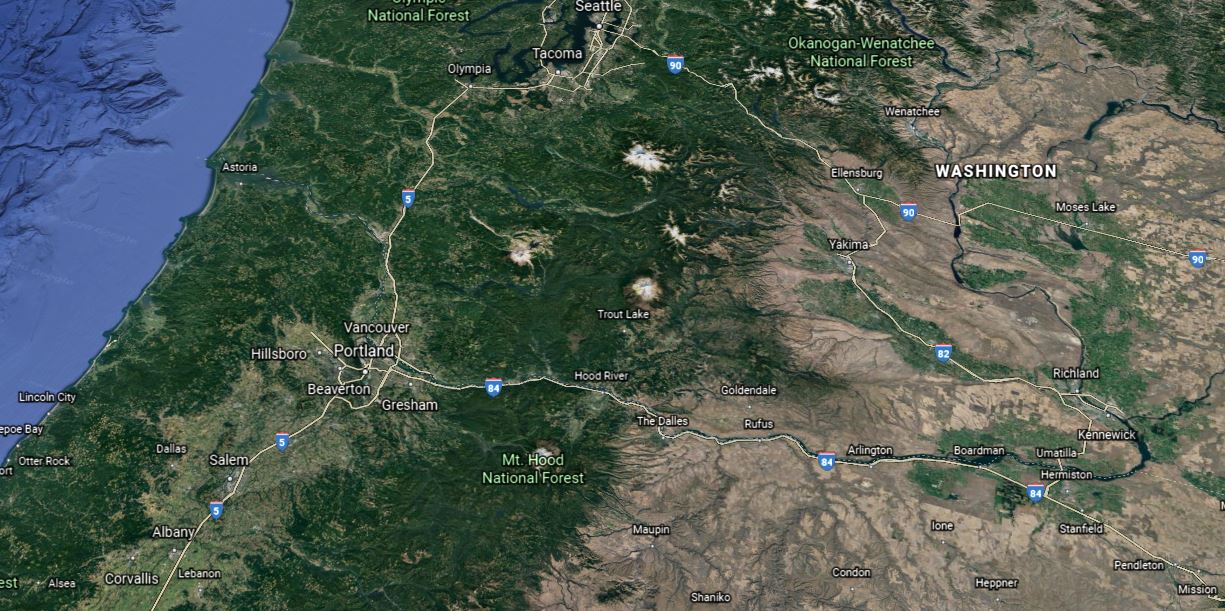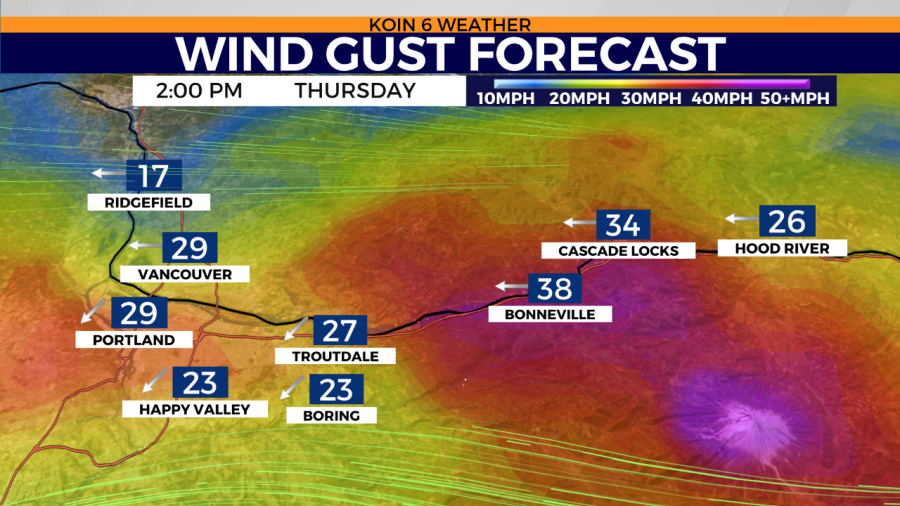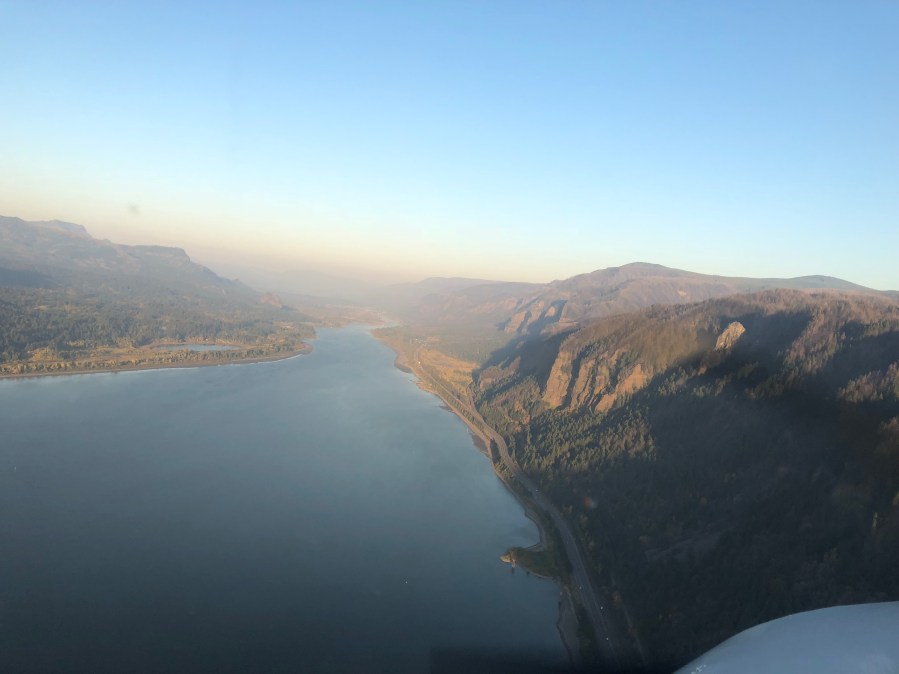PORTLAND, Ore. (KOIN) – Wow, there are mountains all around us! What’s that down below? A giant river cuts right through the middle of a massive mountain range! We’re talking about the Columbia River Gorge.


Such a marvelous construction to our local geography. The Gorge was created due to a long history of flooding dating back to the Ice Age.
If you look at an overhead view of the Columbia River Gorge, you can see the river cutting through Washington and Oregon right to Portland. This is one of the few channels that carves from one side of the mountains to the other. A sea level passage with a strong flow. This is definitely an important feature to our weather here in the Pacific Northwest (PNW). We will have to spend more time on the overall impact of the Gorge in another lesson, but this one is focused on gap winds and fluid constrictions.

Want to make your own ball machine? Here Chief Meteorologist Natasha Stenbock applies Bernoulli’s Principle and the Venturi Effect.
WATCH THE VIDEOS ABOVE
Why did we start with a conversation about the Cascades and the Gorge, well those physical elements play a role in a special topic that Chief Meteorologist Natasha Stenbock explains in the video above. Today we are going to touch on something called the Venturi effect. In meteorology we tend to think about this concept in terms of wind, but it also applies to liquids. A great way to understand this is to watch the flow of a river as Natasha points out in her video. As liquid or air flows through an imaginary pipe it will maintain its speed until you make that pipe narrow. When you narrow the flow, that flow will rush through the smaller space faster. Think of a water hose. Put your thumb on the flow of water and suddenly you have a water fountain blast. This also explains why air moves faster through the smaller gaps in the Gorge.
Venturi Effect: An increase in wind speed or fluid in a constricted area where the pressure lowers. This happens in mountain gaps and other narrowing passages.


Around here we tend to talk about this with a familiar term known as “gap winds”. Have you ever felt the strong wind coming out of the Gorge? It sure can be brisk. High pressure that builds east of the Cascades will rush towards low pressure that is west of the Cascades. That difference in pressure will generate wind. That wind flows right down the river’s corridor in the Columbia River Gorge with steep mountain cliffs on each side. As it approaches the gap, it tends to increase. That’s the Venturi effect. Many days we can experience a strong wind in the 20 and 30 mph range with some areas of the Gorge dealing with even stronger wind speeds.

MORE ABOUT PRESSURE AND WIND HERE
Gusts at Crown Point in the Columbia River Gorge can exceed 60 to 80 mph. It’s a popular place to go when you know that wind is going to blow from the east. Here’s Chief Meteorologist Natasha Stenbock with her first experience trying to stand against gusts up to 60 mph. Nov. 18, 2018.
This is one reason why Hood River, Oregon, is one of the best places for windsurfing. If you ever drive through the Gorge, you’ll probably see some kitesurfing and boarding going on because of the wind traveling through the constricted area of the mountains. It’s also a prime spot for a little fun while reporting in the winter because of how windy it gets up at the Vista House. It’s one of the joys that you have to experience as an Oregonian and Washingtonian.


Editor’s note: The KOIN 6 Weather team is presenting weather and science lessons to help serve our teachers and students. Click here for more lessons.
